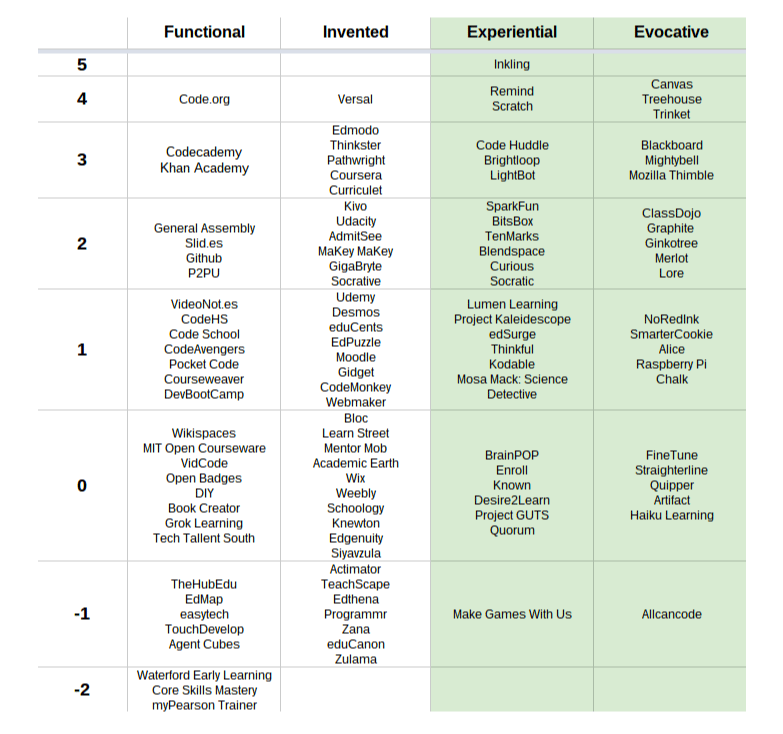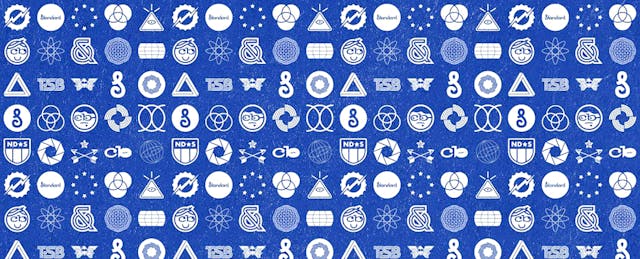Brands can be difficult for startups, especially since the product you’re building will change often as you grow. To be sure, great products can overcome mediocre brands and great brands will certainly not overcome inadequate products. But if you’re founding a company, launching a product, or considering rebranding you have the opportunity to create a lasting advantage if your brand can capture your unique positioning in the marketplace.
The examples in this post are drawn from the edtech space since that’s the space my company Trinket is in. As I’ve written before, edtech is a space in which humble companies win. But the principles apply to startups in any industry.
Battle of the Brands
Before getting into the How, I want to zoom in to the Why. What benefits can branding offer your startup? Let’s look at some examples.
Blackboard vs. Canvas
Blackboard is an excellent, durable brand, even if has become the company everyone loves to hate. Blackboards were ubiquitous in the 1990s, when the company was founded. By choosing this central, pervasive piece of the classroom experience, Blackboard was able to say “we’re everywhere, crucial, and a product you’ll use in class every day. Rely on us.” There were many elements to the company’s success but their strong brand was absolutely a contributing factor.
Instructure’s Canvas was a new approach to LMSs. For teachers, the Brand suggests a blank slate, not cold and heavy like a blackboard but light, bright, and full of possibility. Capturing ease of use for teachers and IT people (because of their then-novel cloud-based architecture), the Canvas brand helped the product stick in people’s minds as the light, fun, creative alternative to Blackboard. Again, there were many elements to the success of Canvas the product but the brand has played a central role.
Codecademy vs. Treehouse
Codecademy burst onto the scene and instantly defined the category of online code school. Their straightforward, functional name left no doubt as to what they did and was, initially, as much of an advertisement for the category as it was for them as a company. Functional names like theirs are often a huge asset when a category doesn’t exist or is growing quickly. Codecademy has set a standard with their brand and is the biggest player in the space. Their brand has done them well.
Treehouse is an evocative brand that clearly differentiates the company’s product in an increasingly crowded space. Evoking a sense of community, fun, and playfulness, the brand prepares users for the social experience their product delivers through integrated members-only forums. Coding education is growing fast, but the Treehouse brand (and tree frog logo) help the company stand out and win users. Interestingly, the brand itself wouldn’t be as strong if Codecademy didn’t already exist in users’ minds. The Treehouse brand works especially well as a direct contrast to an Academy in terms of market positioning.
Igor Naming Agency’s Functional, Invented, Experiential, and Evocative categories can help break this complexity down. Here’s my (entirely subjective!) classification of companies in the space:

You can learn more about most of these brands in the excellent edSurge index.
EduWho? ClassWhat? CodeHuh?

Regardless of how you rank them, the figure above shows the edtech brand space is crowded. There are a lot of Eduthises, Classwhatsits and Teachwhathaveyous. In the space that Trinket plays in (coding education), Codethisorthats dominate.
The first movers in a space often have functional names like Codecademy or Code.org. But the opportunities for Functional brands tend to be taken by the first players; subsequent brands must be considerably more inventive. Invented names can be very successful but are on the whole very difficult for new companies because of memorability. Portmanteaus like Groupon do well for category creation startups because they blend recognizable parts in ways that communicate the product idea clearly. For crowded spaces like edtech, though, the Experiential and Evocative names have the most potential to differentiate your company over time. They’re the categories I’d recommend you consider most thoroughly. That’s what we did, and it’s been paying dividends ever since.
Why Trinket?
We rebranded (in what turned out to be a pivot) from Coursefork To Trinket. Trinket was initially not a serious contender because it implies cheap or worthless. Why the heck did we pick it?

We didn’t know it at the time but Trinket is not only our brand, it’s helping us define a new product category and user experience: embeddable, runnable, shareable code for teaching and learning. It took us 4–5 meetings over two weeks (plus lots of thinking during down time) and time very well spent.
A partial inspiration for us was the Hero with a Thousand Faces, where there is a lowly hero who goes on a journey, seeking to accomplish something great (i.e. slay a dragon). The hero has a transformative experience, acquires a treasure, talisman, etc of some sort, and is able to use that to defeat the dragon. Everyone lives happily ever after (and/or your brand dominates the marketplace). This is an archetypal myth found across many human cultures and many modern films and novels.
Too often brands position themselves as the Hero, with the customer relegated to some sort of damsel in distress. This positioning works for some companies, but we knew that we wanted to be the talisman that helped transform our users into heros.
So, what is Trinket? In English, a trinket is small, lightweight thing, simply made, that one carries along and keeps close. It has come to mean jewelry but originally indicated a tool of some sort. Its value is entirely subjective. And, though a necklace of bone or something might make the hero feel powerful, in the end he/she is able to slay the dragon because of who they let themselves be when they’re wearing the trinket rather than any magical powers it has. The Trinket was a catalyst, a support, and its power comes entirely from its wearer.
This also describes the positioning our product has in the coding education space. Many other companies try to take very active, heavyweight roles in their users’ journey, playing the Hero, or perhaps a Master who trains the Hero. We seek to be one of the users’ most cherished possessions but also the most lightweight.
If you believe an Evocative brand is right for your company, make sure that the narrative and imagery around your brand reinforce its positive aspects. Initially, some of our investors and advisors were concerned that it was weak and implied cheapness. We incorporated the image of a key into our logo, evoking the older sense of trinket as a tool and emphasizing that the value of our product is what it enables our users to do.
Good luck!
Hope that helps anyone considering a rebrand or naming a product! One final word of advice: if you think you don’t have time to brand or rebrand you’re wrong. The rebranding exercise, if you do it right, will help clarify your product design principles and the strategic positioning that you already know but might not be emphasizing enough.


